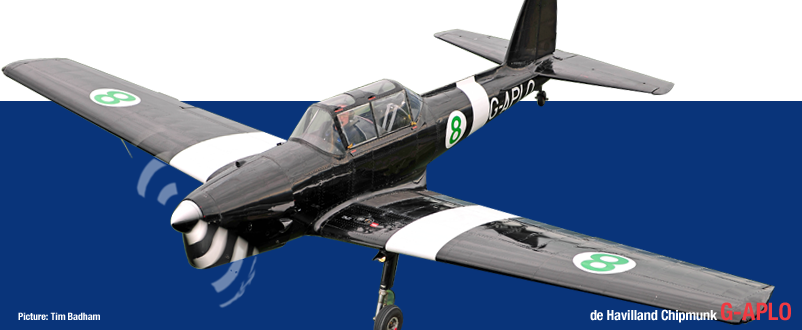
G-AMSV Returns to Coventry
An old friend returned to Coventry yesterday when G-AMSV, in her striking Indian Air force livery, landed here for extensive maintenance by our engineers. Sierra Victor was part of the Air Altantique fleet here for many years. She'll...
Baginton Air Pageant
The initial details for the Baginton Air Pageant are up on the website! As we don't have the space for a full-on air show attracting 20,000 or so people, we're aiming for low-key, themed days like this. A couple of thousand people,...
Newquay Pleasure flights
We promised we'd be back to fly in Cornwall, and here we are. We'll be heading south with a Rapide and Chipmunk to spend a week at Newquay from 25th July, with a further visit planned in August. The flights are bookable in the normal...
New Dakota Book
Geoff Jones just told me that his new book on the DC-3, released to celebrate the 80th anniversary of the Dak's appearance, is now available. The cover sports a lovely shot of G-ANAF, shot by Simon Westwood before her radome goiter was...
Nimrod Engine Run
We've just confirmed plans by NPT to run all four of the Nimrod's Rolls-Royce Speys on Saturday 9th May. We expect the thunder to start just after lunchtime. Come along and enjoy some audio power - and please dip into your pockets...


The de Havilland DH28a Tiger Moth was one of the most successful, prolific and charismatic training aircraft of all time. The cessation of World War II meant there was a need for a suitable replacement.
The de Havilland Aircraft Company of Canada stepped up to the mark and Polish designer Wsiewolod Jakimuk put pen to paper on the aircraft that would eventually become the Chipmunk. As the first indigenous aircraft produced by the company, it was designed DHC-1 and the prototype first took to the skies on 22 May 1946 with Pat Fillingham at the controls.
The all metal, low winged monoplane was an instant success and after evaluation by the Aircraft and Armaments Experimental Establishment (A&AEE) at RAF Boscombe Down an order was placed for the first of what would become 735 aircraft – all powered by the 145hp Gipsy Major engine. The last batch of RAF Chipmunks were finally retired from service with Air Experience Flights as late as 1996 – nearly fifty years after the first example entered RAF service. Even today the Battle of Britain Memorial Flight (BBMF) retains a pair of Chipmunks for tail-wheel training and pilot currency.
Total production ran to nearly 1,300 with more than 1,000 built in the UK at Hatfield and Hawarden aerodrome near Chester. Others were built in Canada and under licence in Portugal. Today they are much prized private aircraft used for aerobatics, glider towing and just plain and simple ‘bimbling’ – it is estimated more than 500 remain airworthy

